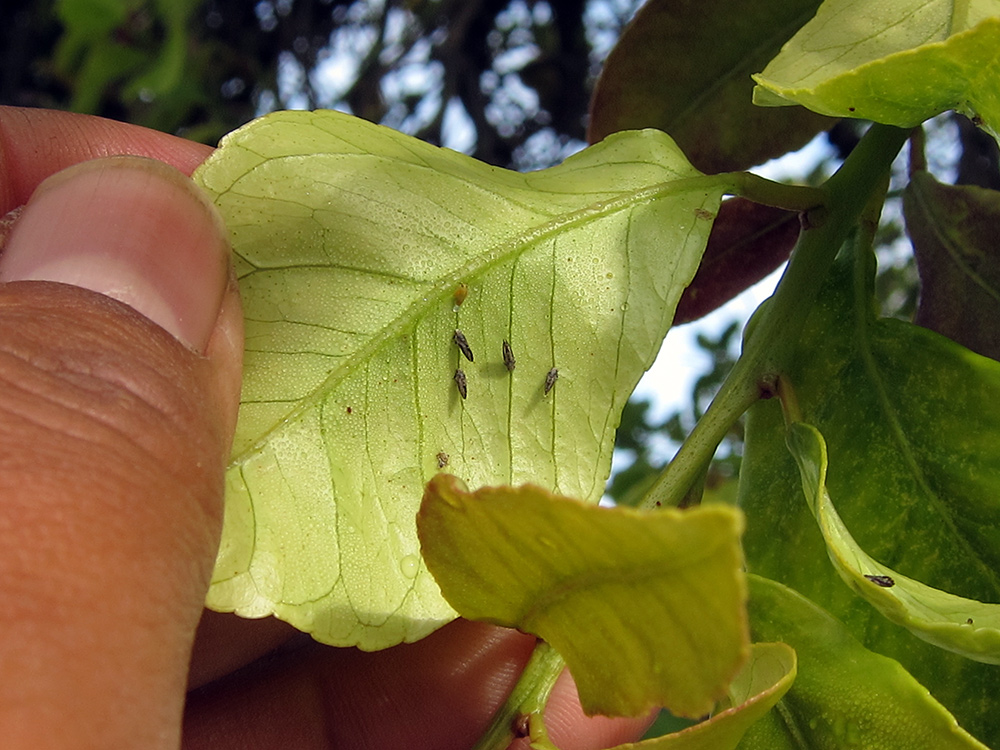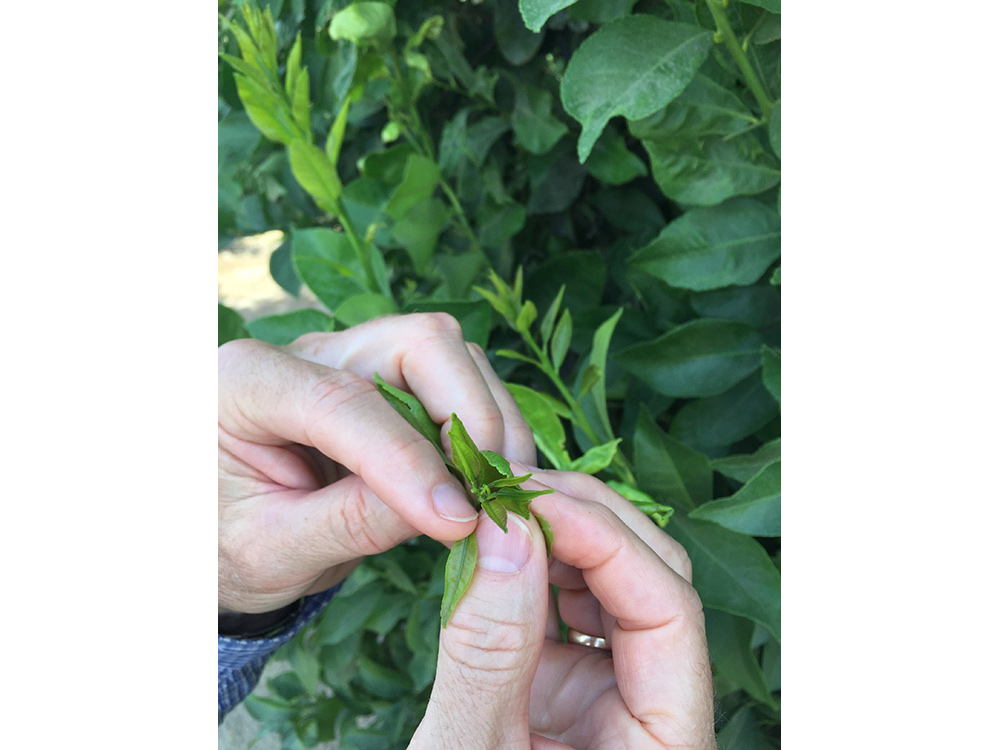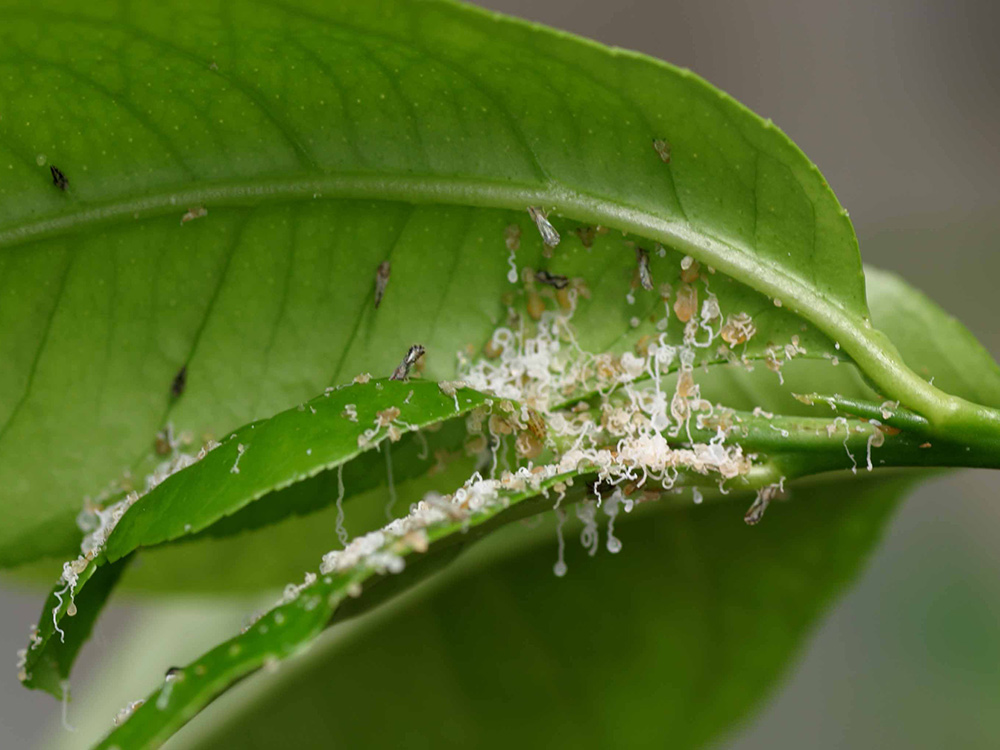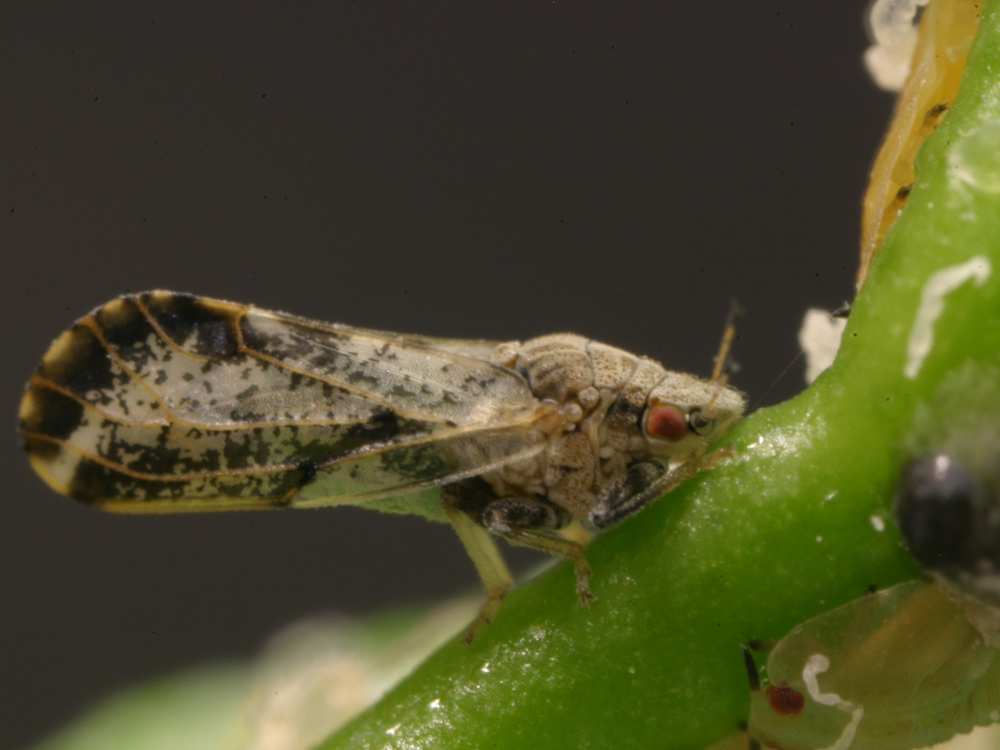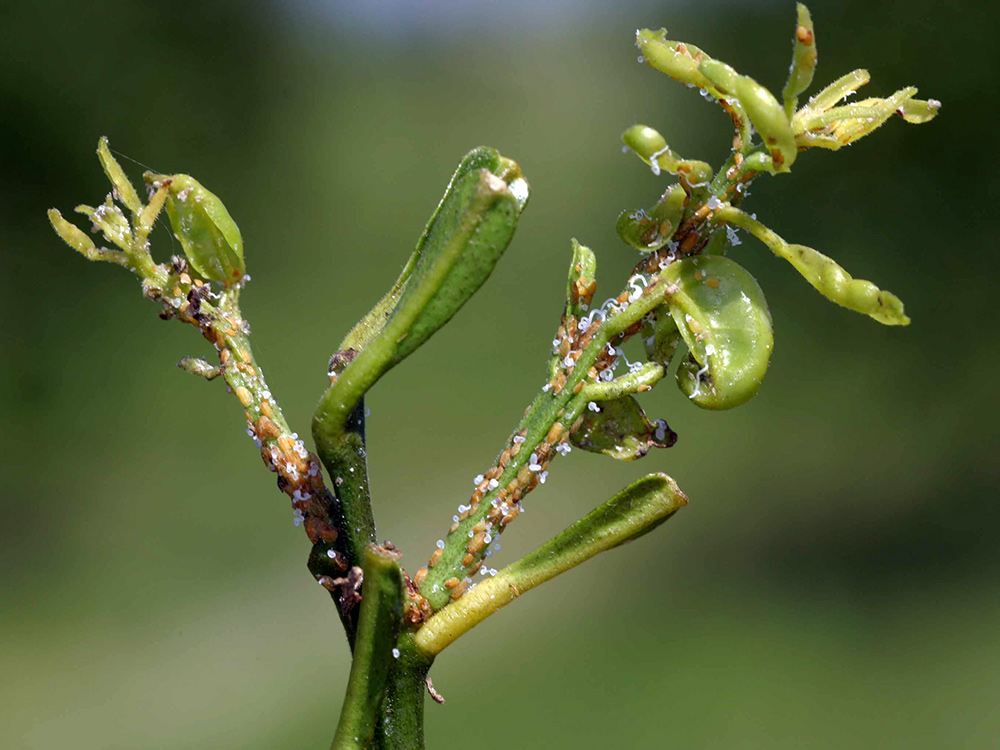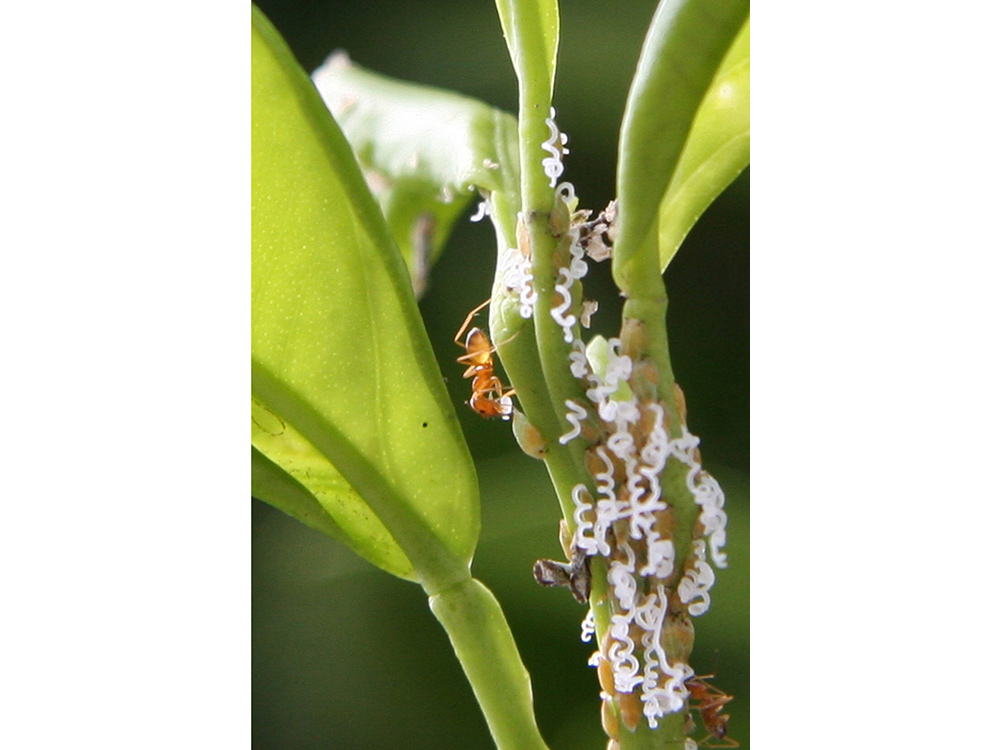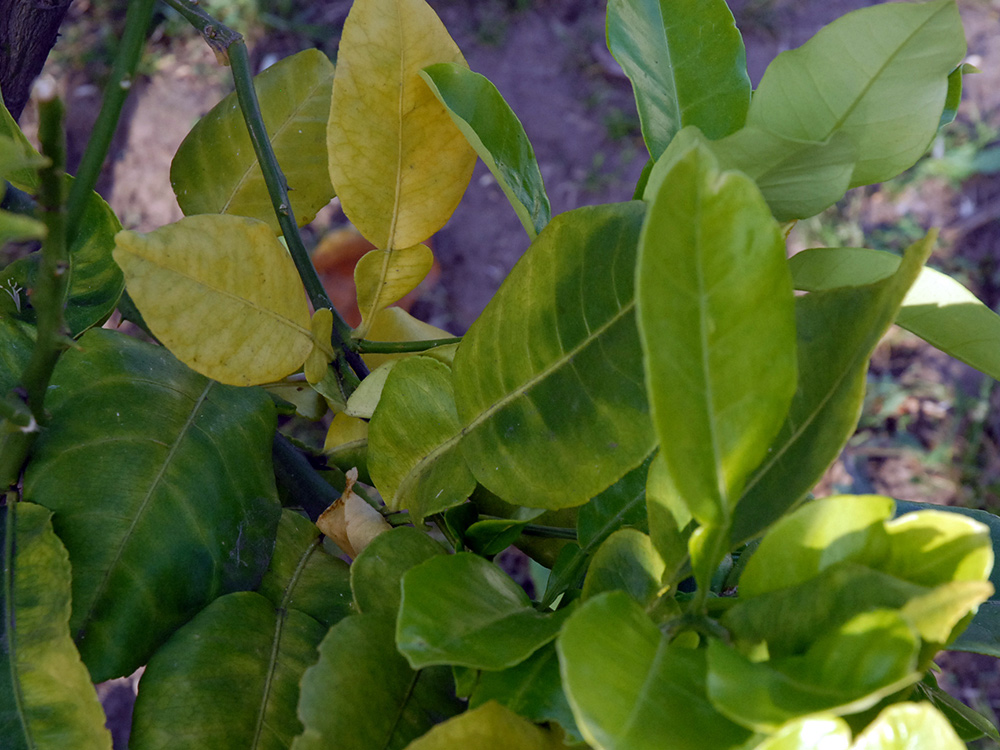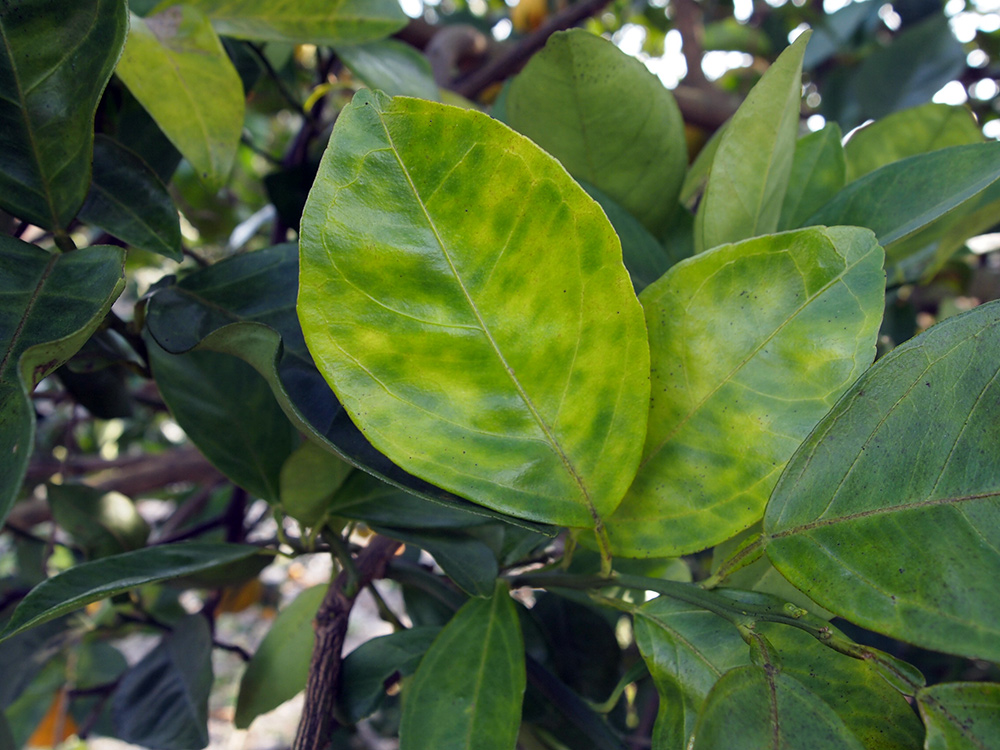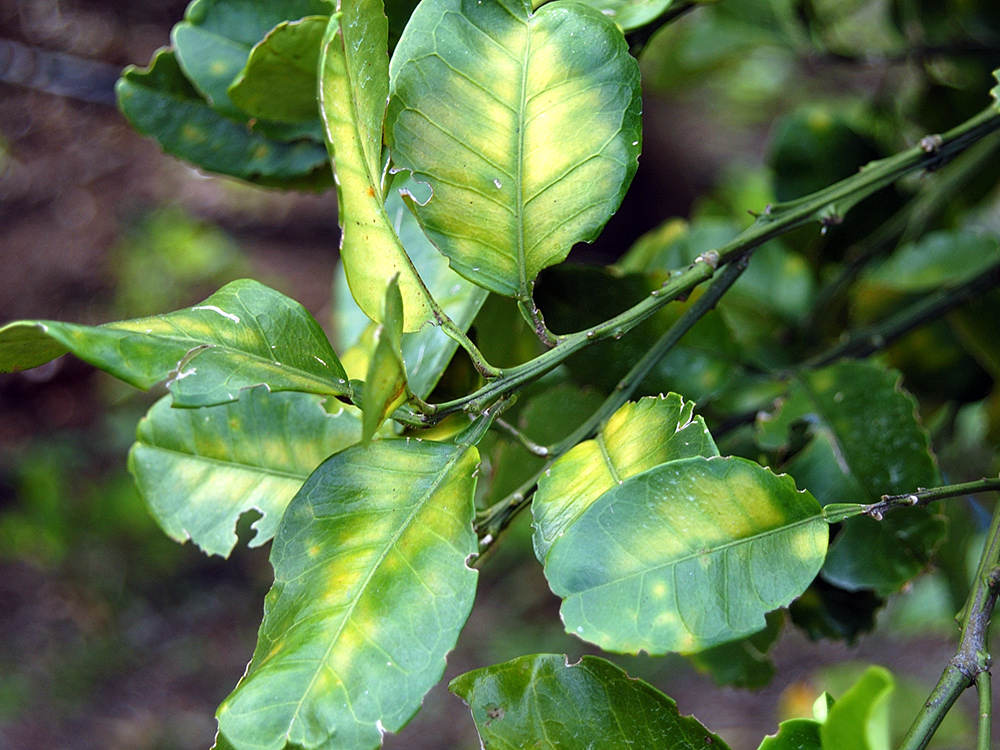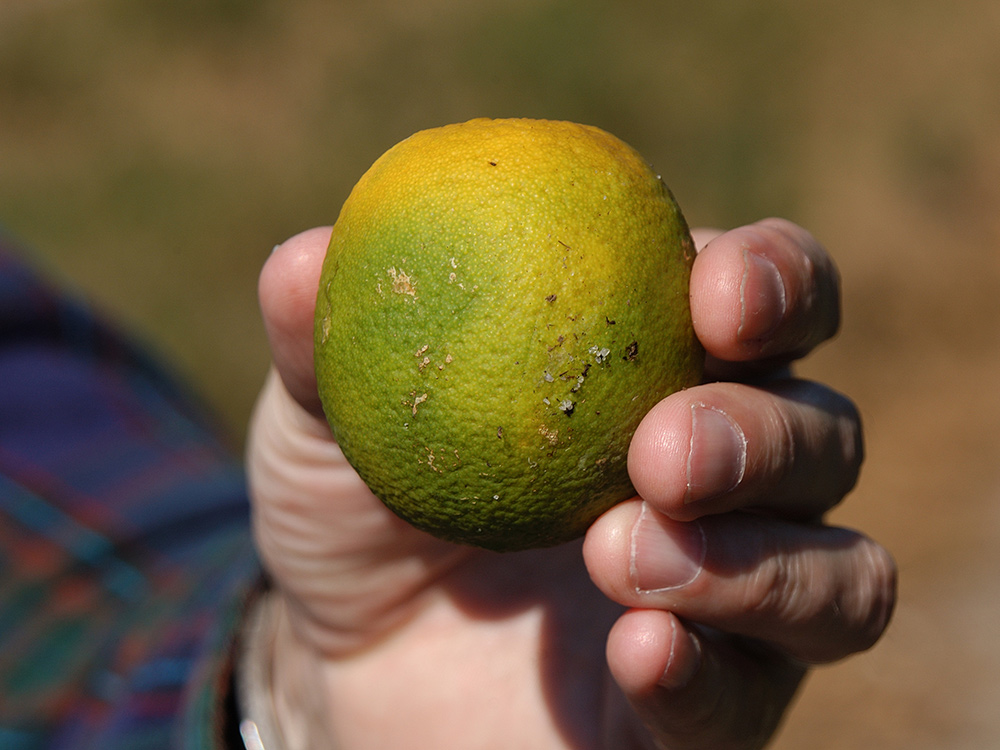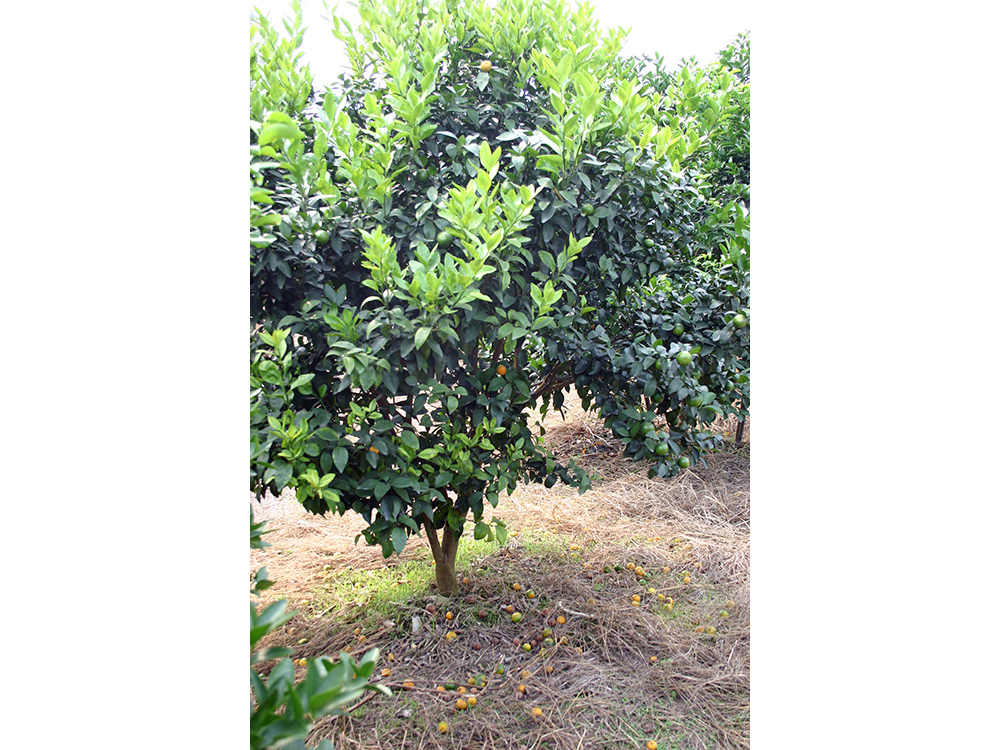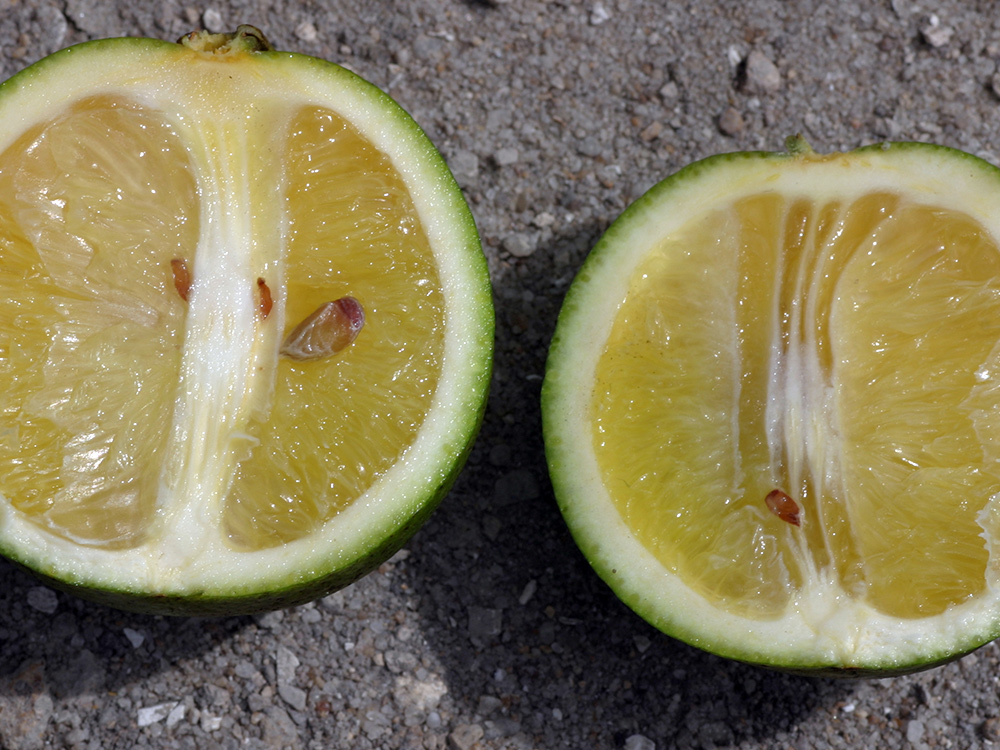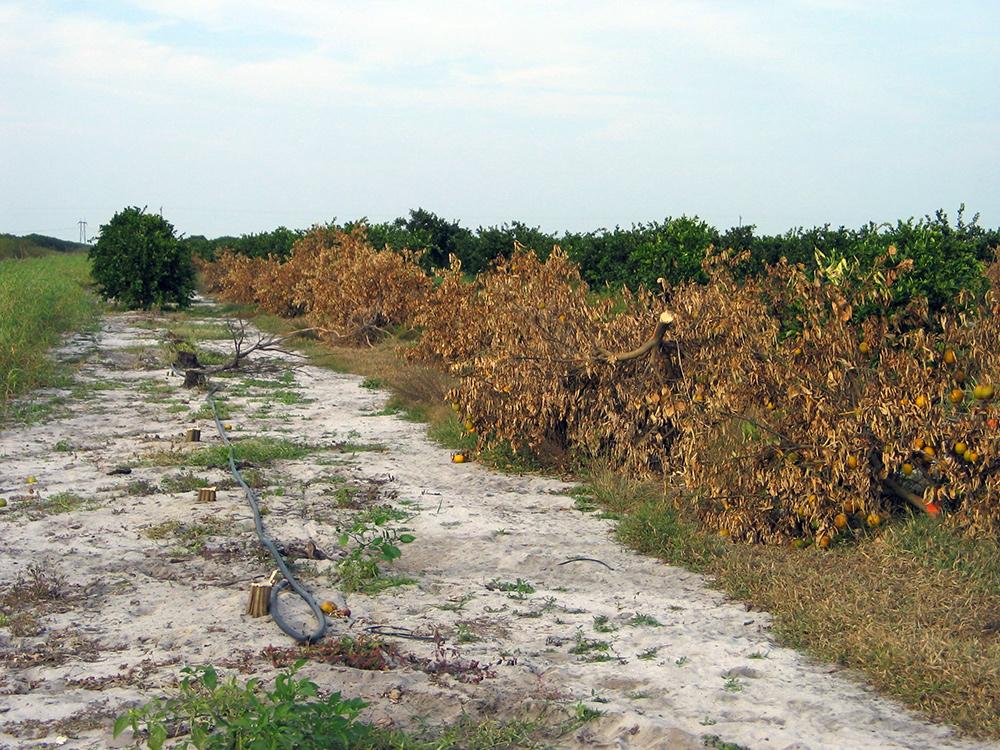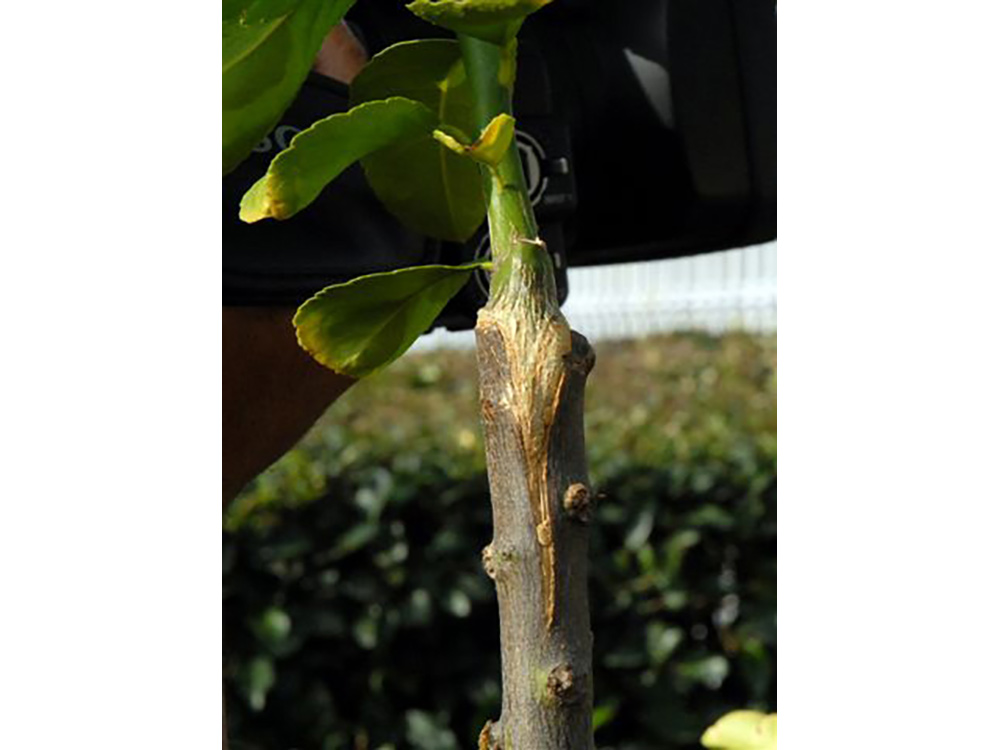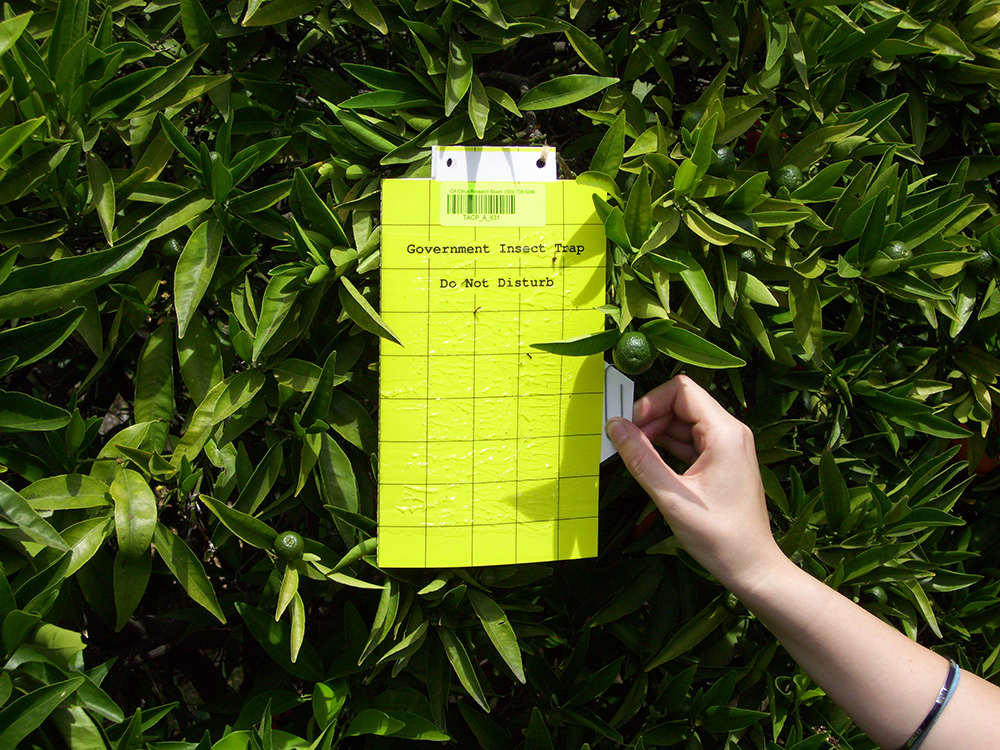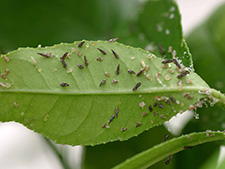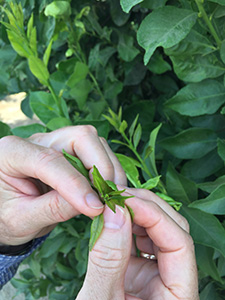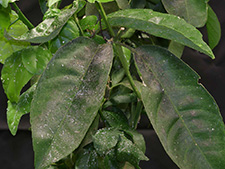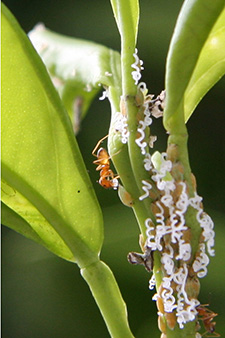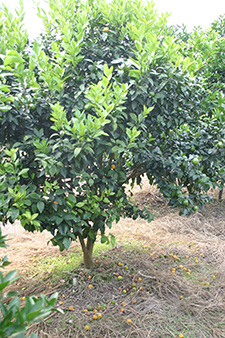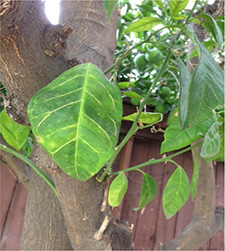Asian Citrus Psyllid and Huanglongbing
A tiny insect no bigger than a grain of rice may go unnoticed on your citrus trees, but it could have devastating consequences for California citrus if not stopped. The Asian citrus psyllid feeds on citrus leaves and stems, and can infect citrus trees with a bacteria that causes a serious plant disease called Huanglongbing, also known as HLB or citrus greening disease. While not harmful to humans, the disease kills citrus trees and has no cure.
The best way to protect citrus trees from HLB is to stop the Asian citrus psyllid. Once a tree is infected with HLB, it will die. Diseased trees need to be removed in order to protect other citrus trees on the property, neighbors’ trees and the community’s citrus.
Click through the photo slideshow below to see photos and learn how to detect the Asian citrus psyllid and Huanglongbing on your citrus tree. If you think you have spotted the pest or disease, call the free statewide pest hotline at 800-491-1899.
California Areas at Risk
The California Department of Food and Agriculture tracks the presence of the pest and disease, and establishes quarantines to help protect California citrus trees. The citrus quarantine prohibits the movement of all citrus nursery stock or plant material out of the affected area. Provisions exist to allow the movement of commercially cleaned and packed citrus fruit. Learn more about what the citrus quarantine means for California residents.
Fruit that is not properly cleaned and/or packed, including fruit grown from commercial operations and residential citrus trees must not be moved from the property on which it is grown, although it may be processed and/or consumed on the premises. Learn what you can do to protect California citrus.
View more detailed maps and quarantine information on the CDFA website.
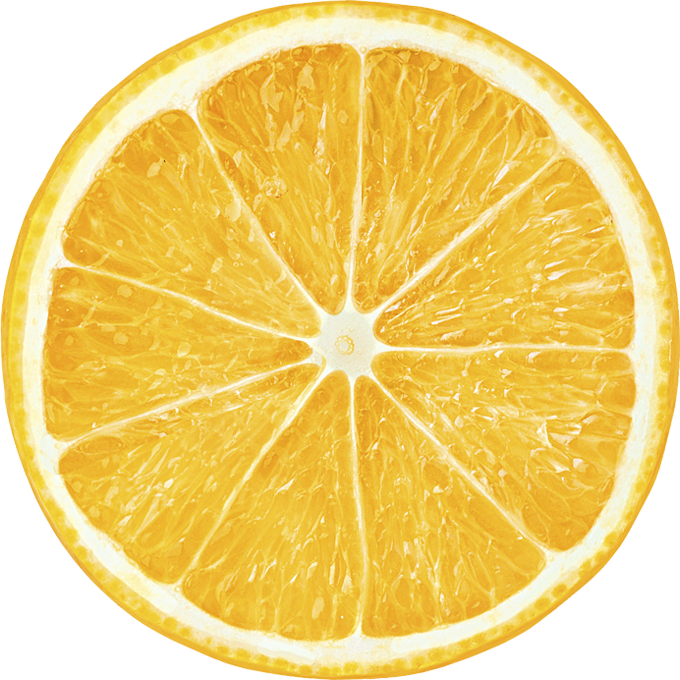

Global Spread of Huanglongbing
As their names indicate, the Asian citrus psyllid and Huanglongbing are not native to the United States. The pest and disease were first discovered in Asia. Throughout the world, the disease has many names, including Huanglongbing, HLB, citrus greening disease, yellow shoot disease and yellow dragon disease. Globalization and people moving citrus plants from one place to another have spread this devastating disease.
Do not transport citrus plants, budwood or plant material like leaves out of your area, and only buy your citrus plants locally from reputable sources. Visit the United States Department of Agriculture’s Animal and Plant Health Inspection Service website, to learn more about the presence of Huanglongbing throughout the world and elsewhere in the U.S.


